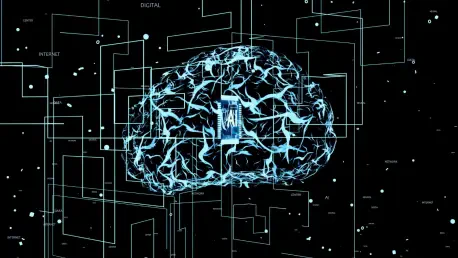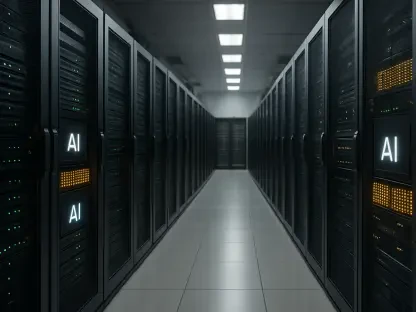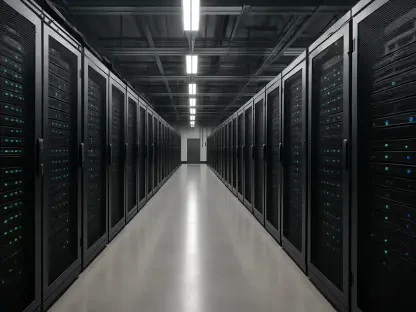Energy efficiency in artificial intelligence has increasingly become a focal point as the demand for AI systems, such as OpenAI’s ChatGPT-4, continues to rise. These systems, while transformative, pose significant energy and hardware challenges, often requiring substantial resources like NVIDIA GPUs to function effectively. KAIST and HyperAccel Inc. have developed a breakthrough in energy-efficient neural processing technology that promises to address these challenges. This review delves into the technology’s evolution, features, and applications to provide a comprehensive understanding of its impact and future potential.
Evolution of Neural Processing Technology
Neural processing technology forms the backbone of modern AI systems, facilitating their ability to perform complex tasks efficiently. Over the years, there has been a substantial shift towards enhancing performance while minimizing energy consumption. This need has given rise to solutions aimed at overcoming existing infrastructure limitations, typified by the latest NPU developments. Emerging as a response to growing operational demands, these NPUs are not only reshaping AI infrastructure but also reflecting broader trends toward sustainable computing solutions.
In this context, neural processing has emerged as a pivotal component in the modern AI landscape. The development from traditional CPU and GPU usage to specialized neural processing reflects a desire to balance power with performance effectively. This evolution has been accelerated by industry-wide efforts to meet the dual targets of efficiency and high-level computational output, marking a notable trend in the technological sphere.
Features and Performance Efficiency
Addressing Memory Bottlenecks
Central to this revolutionary technology is its ability to effectively address and resolve memory bottlenecks, a significant barrier in AI systems. Traditional infrastructures face continuous energy consumption challenges due to high memory demands. KAIST’s innovative approach, utilizing a specialized AI chip, runs models 60% faster and utilizes 44% less electricity than its traditional counterparts. This cutting-edge technology optimizes memory efficiency using quantization techniques, ensuring the same performance with less hardware.
The technology’s capacity to handle memory efficiently relies on techniques like group-shift quantization and fused dense-and-sparse encoding. These allow seamless integration into existing systems, circumventing the need for extensive architectural changes. Consequently, it delivers higher performance levels without compromising on the resource management front.
Optimization for Energy-Efficient Inference
The NPU’s strengths lie in its energy-efficient inference optimization processes. This involves minimizing power usage while ensuring inference accuracy remains intact. By innovating around KV cache quantization, the technology reduces memory usage, maintaining performance across varied AI deployments. Core to this optimization are hybrid quantization methods that eliminate excessive energy requirements without degrading computational accuracy.
This optimization directly translates to real-world applications, where maintaining a balance between energy efficiency and performance is crucial. Implementing such solutions provides an evident advantage in reducing costs linked to power consumption while extending hardware lifecycle, illustrating its diverse capabilities in practical scenarios.
Recent Advancements and Emerging Trends
Recent advancements in energy-efficient neural processing are marked by ongoing innovation and adjusted industry behaviors. The unveiling of KAIST’s technology at the International Symposium on Computer Architecture spotlighted its role in paving the way for more sustainable AI infrastructures. Trends point toward an increased focus on scalability and integration of such solutions, with manufacturers keen on adopting energy-efficient alternatives as standard practice.
Moreover, there is a noticeable industry shift toward adopting solutions that complement operational sustainability goals. As investments in AI technologies grow, the drive to incorporate environmentally responsible practices aligns technological advancement with ecological needs, steering future development in this sector.
Applications Across Industries
In terms of practical deployment, energy-efficient neural processing technologies are finding applications across numerous industries. From healthcare, where AI-driven diagnostics require efficient data management, to automotive sectors that leverage AI for autonomous systems, the technology under review is reshaping operational frameworks. Industry leaders are already utilizing these advancements to reduce energy costs while maintaining high levels of service delivery.
One notable application stands within AI cloud services, where energy conservation is paramount amid rising operational costs. By adopting NPUs, cloud service providers are setting benchmarks for future industry standards, ensuring sustainable practice aligns with robust performance expectations.
Challenges and Limitations
Despite these technological strides, several challenges remain. The current technology faces potential hurdles in wide-scale adoption due to regulatory landscapes and market dynamics. The transition from established GPU systems to NPUs requires substantial shifts in infrastructure, which can impede immediate implementation. Furthermore, achieving the desired level of scalability poses a potential obstacle that could impact its broader industry acceptance.
Efforts to address these challenges focus on adapting the technology to conform to existing market needs while ensuring regulatory compliance is met. Ongoing development sees collaborative approaches between research institutions and industry players being pivotal in overcoming these barriers efficiently.
Future Development Prospects
Looking to the future, energy-efficient neural processing technology promises significant advancements. Potential developments include enhanced scalability, broader integration capabilities, and innovations that might further reduce energy consumption. The long-term impact could revolutionize AI ecosystems by setting new standards for efficiency and sustainability.
These prospects highlight a pathway toward more comprehensive adoption across industries, enhancing how AI technologies are integrated into everyday tools and systems. As the AI sector continues to evolve, these advancements are set to play a transformative role in shaping future landscapes.
Concluding Remarks
In conclusion, the review of energy-efficient neural processing technologies highlights their capacity to profoundly reshape AI infrastructures. This technology, being at the forefront of balancing performance with environmental responsibility, signifies a major step forward in sustainable AI development. Moving forward, success will heavily depend on effective scaling and seamless industry integration, positioning this innovation as a cornerstone for future AI solutions. As industries seek more sustainable methods, the advancements pioneered by KAIST and HyperAccel Inc. provide a crucial blueprint for ongoing development and operational refinement.









